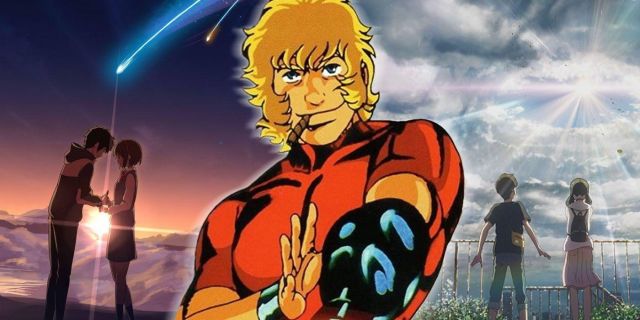In recent years, it has become the norm for anime to be viewed in high definition, or 1080p. While some series, notably older ones, have not been given the best-pixilated quality, especially in their dubbed versions, most have recently received the same treatment as newer anime tend to get, greatly improving the viewing experience. Although 1080p is the most commonly-used term for full definition, even higher definitions do exist, the next one up being 4K.
Although the anime industry has now achieved fairly mainstream status, especially in North America, most titles are only available to be watched in 1080p at the highest. Two of Makoto Shinkai’s most popular films, Your Name and Weathering With You, are some of the only known works to be produced in 4K. The long-forgotten 1982 film Space Adventure Cobra has also been remastered with a Blu-ray DVD release in the deluxe visibility. Despite the success of the aforementioned anime films and outside praise for their 4K availability, no other film or series has yet been influenced into doing the same.
What Is 4K Resolution?
Aside from the various memes that have sprung up on the internet, 4K is, in a digital context, defined as a spotless and crisp image resolution being displayed on a horizontal screen containing four-thousand pixels. This may mean that, when zoomed in on, a small detail of the frame will look less blurry or pixilated, giving an all-around sharper and refined image. Given that anime’s main viewing platform in Japan is a standard-sized TV set, 4K may sound like the ideal viewing experience.
However, very few anime have received 4K status, much less been given 4K productions in the first place. Even the most popular anime are not exempt from this, although the opening theme for Chainsaw Man has been widely thought to be given the 4K treatment. Not even Crunchyroll, the go-to site for streaming anime — especially after its merge with Funimation in 2022 — contains 4K resolution in any of their plans, with 1080p being the max on offer.
4K Resolution Only Displays Obscure, Minimal Sharpness
While 4K is essentially the quadrupling of 1080p definition, with the screen appearing just a bit clearer, viewers have often reported that they don’t notice much of a difference. In addition, TVs capable of providing a 4K option are still not widely available or consumed on a global basis, obscuring the resolution’s touch-ups even more. As 1080p already provides the high image resolution that can be enjoyed by most, with some choosing to watch anime in 720p — to save money on their streaming plan, for example — 4K only exists for plenty of people as a once-in-a-while extra luxury.
Since 1080p is a high enough acceptable viewing standard among anime fans, many might not even care about the small, slightly blurred details in the image, as they are often not noticeable except perhaps in a few close-up shots. On top of this, while animation and art style is often a key factor for fans to determine if an anime series or film is worth watching, the voice acting, storytelling, characters and even the soundtrack play an equally large role in that verdict, pushing the importance of the 4K experience to the side.
Anime in 4K Resolution Would Only Add More Development Time
Even though more animators have been put to work thanks to the increased funding and demand in the anime industry, well-thought-out and beloved anime series and films take a considerable amount of time in the production phase, just as in the case of 3D-animated films. Due to 4K resolution requiring a lot more attention to the smallest of details in a single image, digital illustrators have to spend more time perfecting those feats and making sure each individual pixel will fit with any type of screen, which slows down the production progress.
In turn, this would mean viewers would have to wait even longer for the next season of their favorite show to come out, perhaps prompting them to simply turn to the manga instead and not bother keeping up with the anime adaptation. As an anime series or film already takes a good several months or even years to be produced in 1080p, the majority of fans would likely prefer to receive this relatively high quality, rather than wait a lot longer for something they might not much notice or care about in comparison to the other production elements anyway.















Leave a Reply